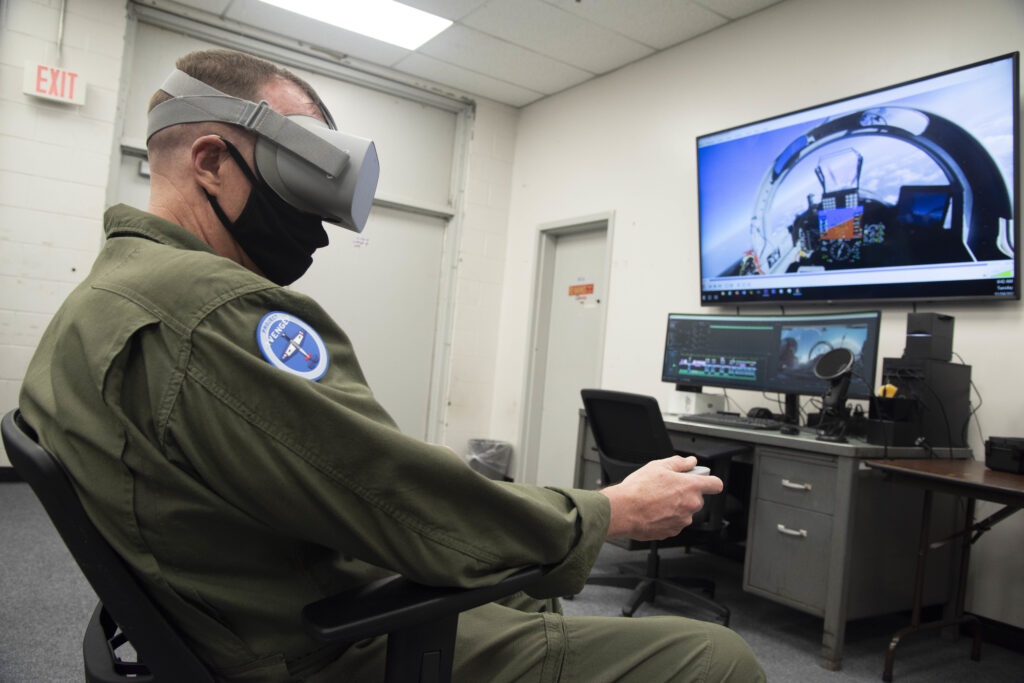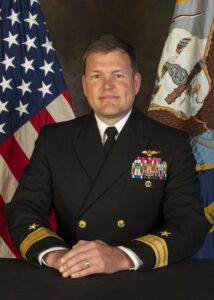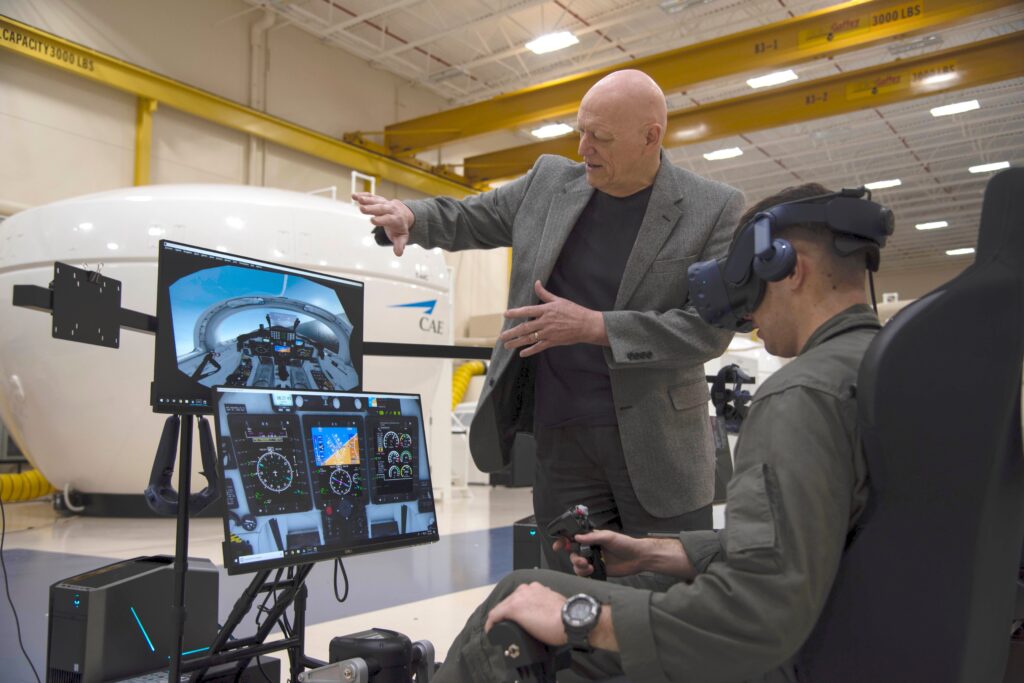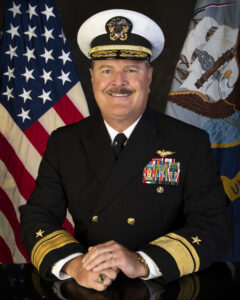
Marine Lt. Gen. Mark Wise ties out a VR pilot training simulation, part of the Navy’s Project Avenger
WASHINGTON: A new flight training program that relies heavily on VR simulations and detailed data is getting Navy trainees better prepared for real cockpits, with some students qualifying for their first solo flight in less than half the time the traditional curriculum requires.
Simulations don’t just give trainees plenty of digital dress rehearsals before they climb into a physical aircraft, Navy officials told the vIITSEC simulation & training conference Wednesday. Already, big-data analytics are helping instructors and training-unit commanders better understand their students’ progress. As the technology improves in the near future, artificially intelligent algorithms could track every aspect of a trainee’s performance in simulation, then provide detailed feedback on what to fix.

Rear Adm. Robert Westendorff
“Project Avenger is our first experimental proof-of-concept class,” said Rear Adm. Robert Westendorff. (The project name is a homage to a World War II torpedo bomber). “[They’re] three months along now, and we’re seeing some incredibly promising results.”
Westendorff is the one-star Chief of Naval Air Training (CNATRA, pronounced “Sinatra”). In the traditional program, he explained, each student flies with an instructor for the first dozen flights until they’re graded as “safe for solo” and allowed to fly on their own, starting around flight 13. But in Project Avenger’s more flexible curriculum, he told the conference, “our top performers were deemed safe for solo on flight five, and they flew their solo on flight six.”
That first Avenger class will wrap up early next year, the admiral said – at which point they’ll graduate into more advanced training classes that are still using a traditional curriculum. It’ll take three years to reform every stage of the training pipeline.
What’s so different about Project Avenger’s approach? The most obvious aspect is the technology – but its real power is how that technology lets humans try new ways of teaching and learning.
For decades, Westendorff said, the model had been the same: “The students show up. I plop a stack of books on the desk for them. They study these books. I provide them some computer-based training, I provide them some lectures, I provide them some simulators, and then we start … a very linear process of flight training: complete this task, okay, now move on to the next task.”

A Navy pilot in training gets instruction on a VR simulator
“We’ve really upended that that entire thought process,” he said. “In Project Avenger, the students showed up and I handed them a personal learning device”: This contains not only all the usual class materials in digital form, but also allows “24-7” access to 3D videos that students can immerse themselves in using VR goggles. Students also get extensive access to low-cost, video-game-style simulations – they have a physical stick and throttle, but everything else is virtual – that they can use at will, instead of having to wait for precious time on traditional simulators that replicate the entire cockpit. (Those high-end simulators are still part of the program, but now the cheap sims let trainees rehearse more often). And all this is done in smaller classes, with instructors who have more time to get to know each student and more flexibility to tailor their instruction to individual strengths and weaknesses.
In the future, added Rear Adm. Greg Harris, big-data analytics and artificial intelligence will provide instructors a much more precise picture of each student’s performance. They might measure a trainee’s maneuvers down to the degree and compare them to how an experienced pilot will fly, for instance.
“There’s a real opportunity to look at data that we can pull from the background of some of these models and simulations … and say ‘okay, Pilot A, you need to work on this skill set,’” said Harris. (He was Westendorff’s predecessor at CNATRA before being promoted to two stars and joining the Chief of Naval Operations staff in the Pentagon). Then you could give each pilot plenty of practice in relatively cheap simulators before you give them expensive flight hours in an actual aircraft. You still have to fly for real and expend expensive fossil fuels doing it, Harris said, but having more hours in simulation beforehand will “make all of the time that I spend burning dinosaurs that much more effective.”

Rear Adm. Gregory Harris
Westendorff is already making more use of data analytics. “When I came to CNATRA this summer,” he told the conference, “I quickly realized that we were somewhat like Major League Baseball: We had statistics and we tracked absolutely everything…. [but] we didn’t have a process, a modern process, to really analyze that data and really understand what the important statistics were.” He would sit down for monthly meetings on students’ progress, only to be briefed with data that was six weeks old. Now, he said, the command is testing a new data “dashboard” that he can log into, any time, for the latest updates.
It’ll take this more sophisticated approach to training to prepare pilots for a more complicated era of war.
“[Given] the complexity of our weapon systems, it’s just not enough to be a great stick and rudder pilot anymore,” Westendorff said. “You have to interpret information, and you really manage a system, or a system of systems.”
“The end result of this is to produce [a] more capable aviator that we send off to the fleet to fight this high-end fight” against great-power adversaries, the admiral emphasized. “Now, there are some other benefits that we think we can realize here: I think I can put students through [training] in a shorter time …and we might even be able to do it at a lower cost which is obviously a good thing, but…the ultimate goal is that more lethal warfighter that we’re sending out to the fleet.”






















